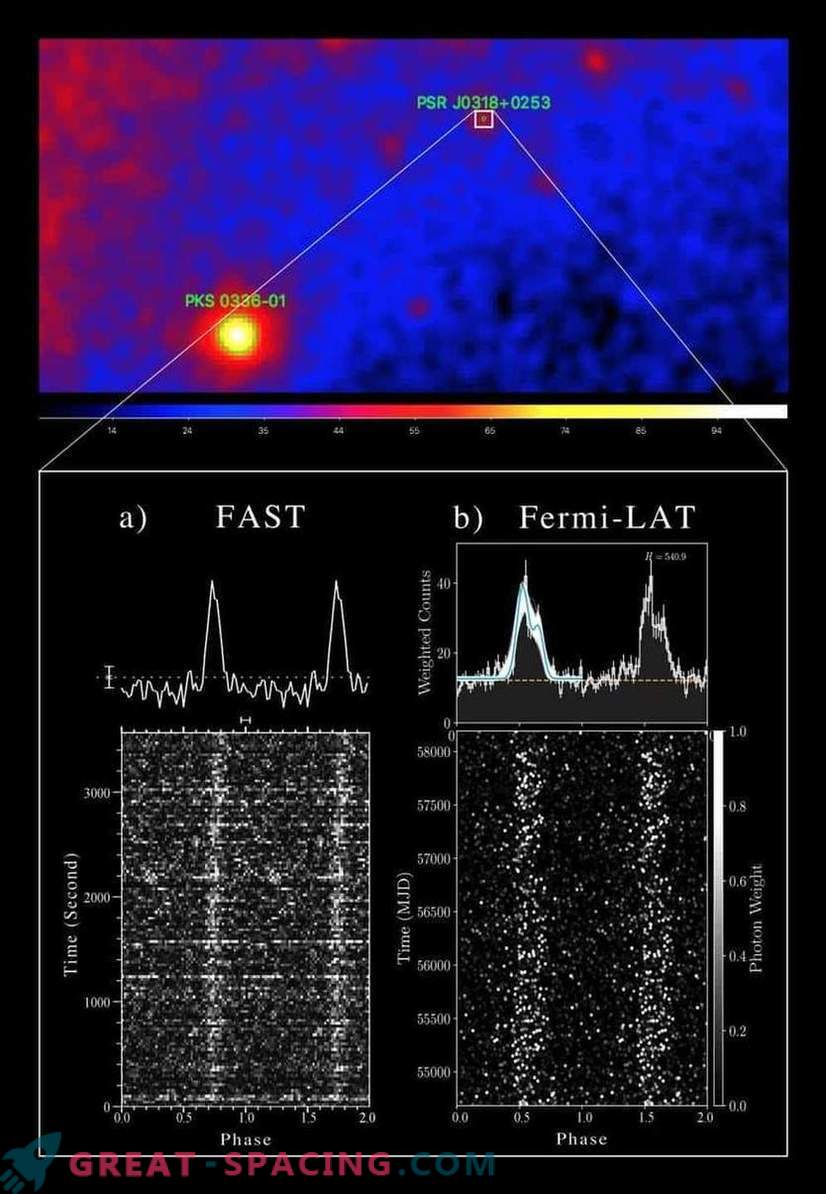
The 500-meter FAST spherical radio telescope detected a radio millisecond pulsar (MSP) coinciding with an unbound source of gamma rays 3FGL J0318.1 + 0252.
FAST is the world's largest single-antenna radio telescope. Managed by the National Astronomical Observatory of the Chinese Academy of Sciences, which managed to find more than 20 new pulsars. This is the first MSP discovery for FAST, made on February 27th.
The pulsar was called PSR J0318 + 0253 and was found by fixing the time of gamma-ray pulsations. This is the first result of the collaboration of FAST and the Fermi telescope. Radio surveillance of the Fermi sources is an effective method of searching for new pulsars. Early observations, including the Arecibo era in 2013, failed to capture the MSP.

Gamma-ray sky map and integrated pulsar profiles. At the top is the gamma ray region where the pulsar is located. Below: a) radio pulses in one-hour tracking; b) stacked pulses from 9 years of research Radio pulses in the direction of 3FGL J0318.1 + 0252 were found with a rotation period of 5.19 milliseconds, and a distance of 4000 light years. Millisecond pulsars are neutron stars that perform hundreds of turns in a second. They play a crucial role in understanding the evolution of neutron stars, and can also be used to search for low-frequency gravitational waves.
The synchronization scale of the pulsar is trying to identify low-frequency gravitational waves from the events of merging supermassive black holes. It is expected that FAST will be able to find many more millisecond pulsars.











































